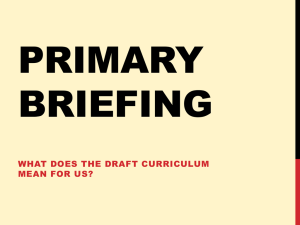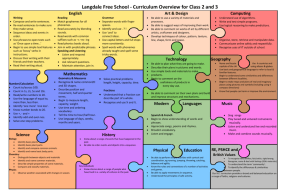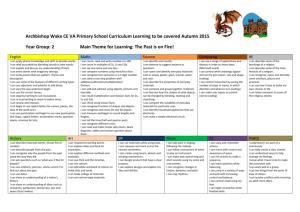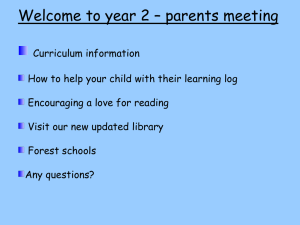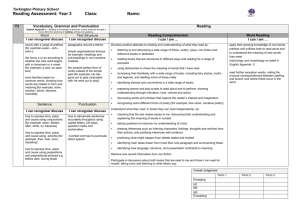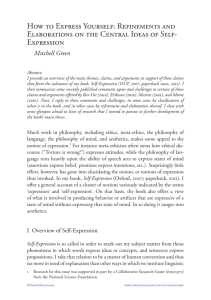Sample course outline - School Curriculum and Standards Authority
advertisement
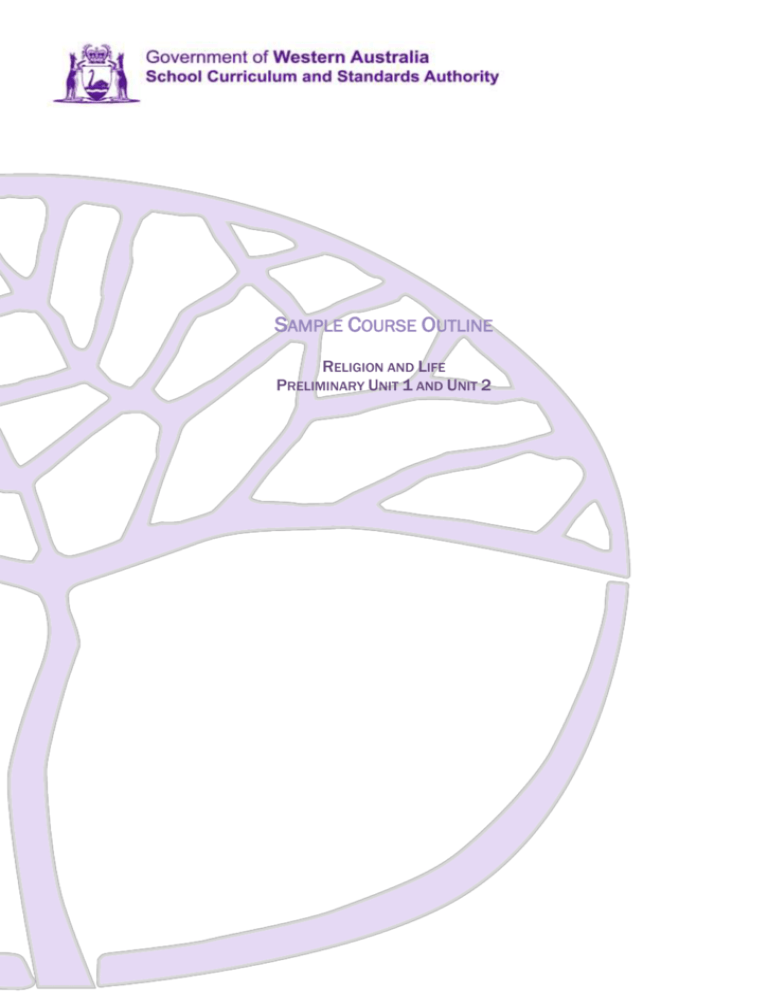
SAMPLE COURSE OUTLINE RELIGION AND LIFE PRELIMINARY UNIT 1 AND UNIT 2 Copyright © School Curriculum and Standards Authority, 2014 This document – apart from any third party copyright material contained in it – may be freely copied, or communicated on an intranet, for non-commercial purposes in educational institutions, provided that the School Curriculum and Standards Authority is acknowledged as the copyright owner, and that the Authority’s moral rights are not infringed. Copying or communication for any other purpose can be done only within the terms of the Copyright Act 1968 or with prior written permission of the School Curriculum and Standards Authority. Copying or communication of any third party copyright material can be done only within the terms of the Copyright Act 1968 or with permission of the copyright owners. Any content in this document that has been derived from the Australian Curriculum may be used under the terms of the Creative Commons Attribution-NonCommercial 3.0 Australia licence Disclaimer Any resources such as texts, websites and so on that may be referred to in this document are provided as examples of resources that teachers can use to support their learning programs. Their inclusion does not imply that they are mandatory or that they are the only resources relevant to the course. 2014/32485v3 1 Sample course outline Religion and Life – Preliminary Unit 1 and Unit 2 Unit 1 (notional timeframe only – may take up to whole year) Week Key teaching points Introduction 1 introduce the course and the focus of Unit 1 What people like about religion 2 a simple meaning of the word religion use of the word religion and showing understanding of the word religion Introduce Task 5 Awareness of own experiences of religion 3–4 What people like about religion How to recognise and use key words in self-expression what students know about religion examples that show what people like about religion The meaning of the word religion Content some examples of different experiences people have of religion examples of experiences students have had of religion; for example: at home in the school in the community The meaning of the word religion How to recognise and use key words in self-expression Formats to express understandings Awareness of own experiences of religion How to self-manage behaviour Formats to express understandings Task 1 due Week 4 Common symbols of a religion 5–7 a simple definition of a symbol examples of different religious symbols what some religious symbols look like and mean examples of common religious symbols what some of these common religious symbols mean Introduction to Task 2 Examples of the presence of religion in society 8–10 examples of religious buildings in the local area examples of religious artwork examples of some religious activities that take place in the local community Task 2 due Week 10 Common symbols of a religion How to recognise and use key words in self-expression How to self-manage behaviour Formats to express understandings Examples of the presence of religion in society Ways to use relevant information and/or ideas How to work on own (with or without assistance) and/or with others on set tasks How to work appropriately in different social settings Sample course outline | Religion and Life | Preliminary Unit 1 and Unit 2 2 Week Key teaching points Examples of what religion looked like or did in the past 11–13 a simple definition of the past examples from the past of what religion looked like or something a religion did in the past Task 3 due Week 13 Key features of a special religious event or place 14–16 examples of religious events or places when religious events are held or where religious events are held what people do at a special religious event or place recognise key features of a particular religious event, such as: location or setting people involved language used/words special clothing special symbols gestures rituals Task 4 due Week 15 Task 5 due Week 16 Sample course outline | Religion and Life | Preliminary Unit 1 and Unit 2 Content Examples of what religion looked like or did in the past How to recognise and use key words in self-expression How to self-manage behaviour Key features of a special religious event or place How to recognise and use key words in self-expression How to work on own (with or without assistance) and/or with others on set tasks Formats to express understandings 3 Unit 2 (notional timeframe only – may take up to whole year) Week Key teaching points Ways people express religion in their life 1–3 examples and possible meanings of religious clothing examples of people who live a dedicated religious way of life religious activities people do in their homes examples of people using religious language Content Ways people express religion in their life How to recognise and use key words in self-expression Introduce Task 10 Examples of how religion is expressed in Australia 4–6 religions found in Australia examples of how religion is expressed in Australia where religious buildings, like churches, mosques, synagogues or temples, can be found in the local area how Australians celebrate some religious festivals or seasons an example of a religious festival or season some Australians celebrate Task 6 due Week 6 Examples of how religion is expressed in Australia How to recognise and use key words in self-expression Ways to use relevant information and/or ideas Formats to express understandings How to work appropriately in different social settings Introduce Task 9 Ways people participate in religion 7–9 how people participate in religion such as religious rituals, events or special religious days what religious rituals, events or special religious days look like ways people participate in religious rituals, events or special religious days Ways people participate in religion How to recognise and use key words in self-expression Ways to use relevant information and/or ideas Task 7 due Week 9 Key features of religion 10–12 some common features of religion, such as leaders, symbols, sacred text, teachings, rituals and buildings a description of one religion using the key features of a religion Task 8 due Week 12 Examples from the past of how people in Australia contributed to religion 13–14 examples from the past of religion in Australia important Australians from the past who contributed to a religion an example of a person from the past who contributed to religion Task 9 due Week 14 Key features of religion How to recognise and use key words in self-expression Ways to use relevant information and/or ideas How to work on own (with or without assistance) and/or with others on set tasks How to self-manage behaviour Formats to express understandings Examples from the past of how people in Australia contributed to religion How to work on own (with or without assistance) and/or with others on set tasks How to work appropriately in different social settings How to self-manage behaviour Formats to express understandings Sample course outline | Religion and Life | Preliminary Unit 1 and Unit 2 4 Week Key teaching points Current issues for religion 15–16 people today and their experiences of religion such as: what they like and don’t like about religion how they respond and/or participate in religion why they participate Task 10 due Week 16 Sample course outline | Religion and Life | Preliminary Unit 1 and Unit 2 Content Awareness of other people’s experiences of religion How to recognise and use key words in self-expression Ways to use relevant information and/or ideas

